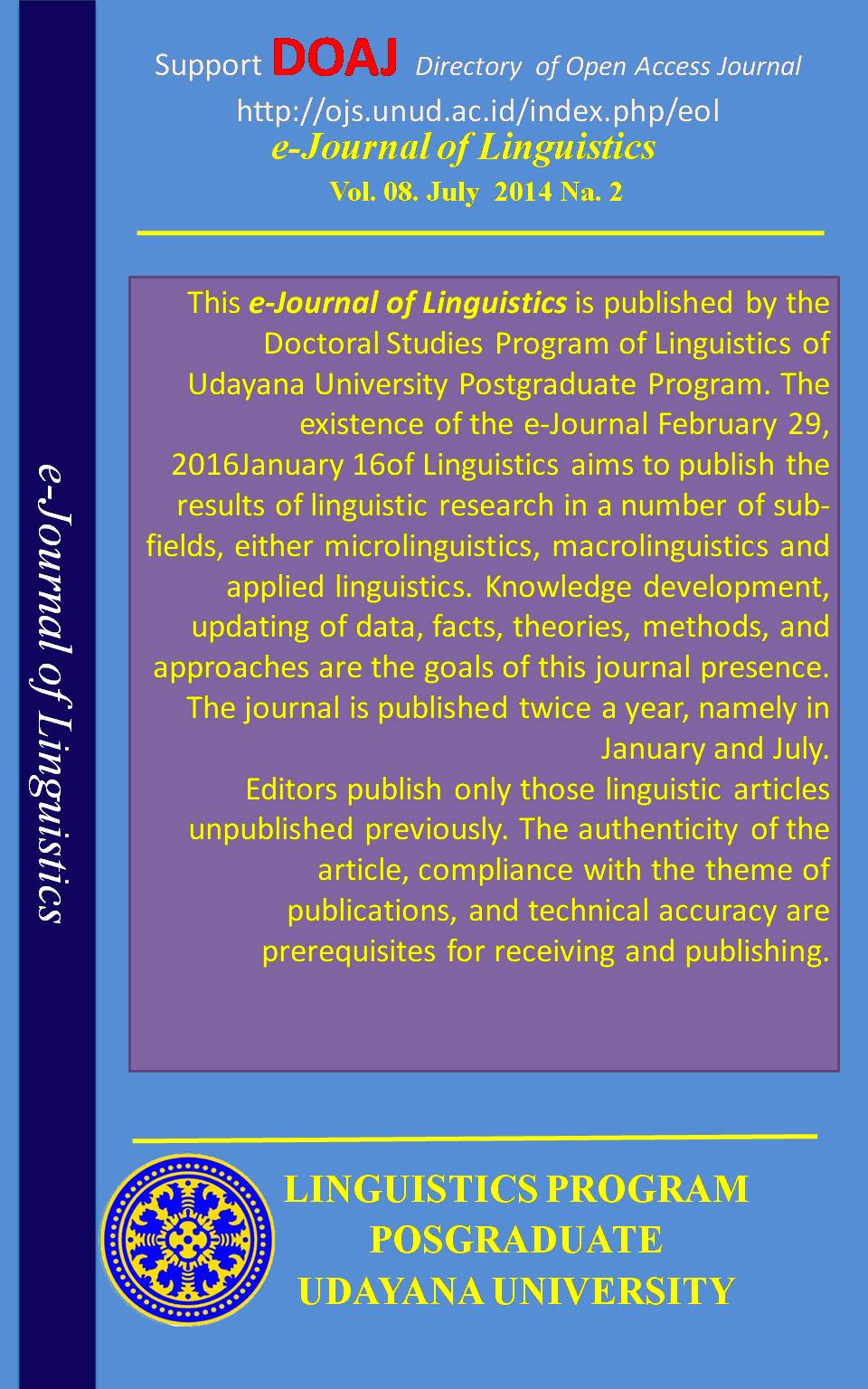DISCOURSE OF AGURON-GURON SYSTEM IN GEGURITAN SIDHA YOGA KRAMA (GSYK)
Abstract
The object of the present study is the text of Geguritan Sidha Yoga Krama (hereinafter referred to as GSYK). This text contains narrations narrating priesthood teaching, which is interesting enough to discuss nowadays. The analysis in the present study is intended to answer the question concerning the discourse of the aguron-guron system in the GSYK text. The answer to this question is the specific objective of the present study.
As a qualitative study, the data of the present study were collected using observation and interview methods. The data were also obtained through library study and using reading technique. The results of the present study are informally presented, meaning that the results of the present study are described using words which are systematically arranged in accordance with the findings.
The analysis of the GSYK discourse includes the theme, plot and prominent characterization. It was found that there were three entities in the GSYK text, as far as the change in status from being walaka into being sadhaka is concerned; they are (1) the ethics of the senior priest ‘nabe’ and the prospective priest ‘sisya’; (2) the ceremony in which someone is informally acknowledged as a priest referred to as pediksan; (3) the implementation of Hinduism.
The results of analysis showed that GSYK was a narrative discourse made up of pupuh (strophes), narrating the priesthood teaching ‘ajaran kapanditaan’ with the aguron-guron system, meaning that the priesthood teaching is transmitted through informal learning. It could be concluded that GSYK could be used as a resource of the priesthood teaching which could be transmitted through the aguron-guron system, making the priesthood teaching easier and more interesting. The aguron-guron system could be observed more comprehensively through geguritan (philosophical verse); it is not only an educational medium but also an amusement. The priest ‘pandita’ is responsible for transmitting such a teaching to people.
Downloads
Keywords

This work is licensed under a Creative Commons Attribution 4.0 International License











